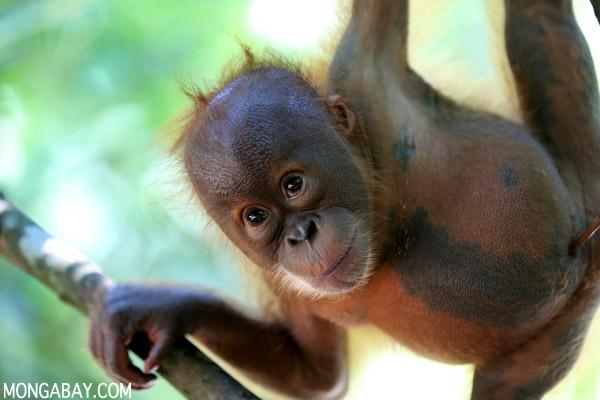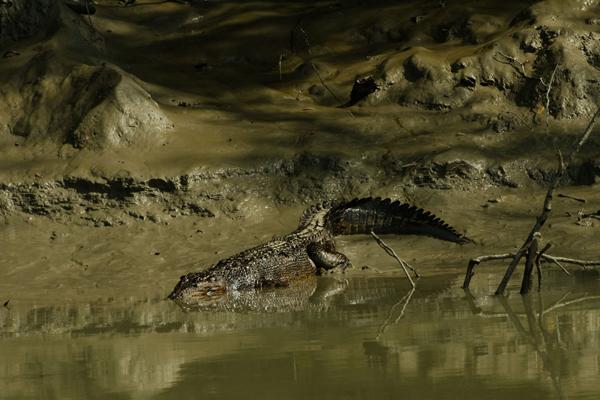For over a decade, a conflict has been brewing between the local community of Senyerang in Sumatra, Indonesia, and a major pulpwood plantation company, Asia Pulp & Paper (APP), according to NGOs operating in the area. In 2004, Indonesia’s Ministry of Forestry awarded a license to APP’s subsidiary, PT Wira Karya Sakti (WKS), to clear the village forests for acacia plantations to generate paper pulp.
Roughly 8,000 hectares of land, believed to be customary lands belonging to the local community of Senyerang village in Jambi province, has been the bone of contention.
“Basically, the community of Senyerang wants the company and the government to recognize and respect their customary lands,” Patrick Anderson, Policy Advisor of the Forest Peoples Programme, told mongabay.com.
Before the lands were licensed to APP, Anderson said, the community would gather forest products such as fruits, resins and fiber from the forests, hunt animals and harvest fish.
“Because the Senyerang community lands were recognized by the Dutch authorities starting in the late 19th Century, they have a strong case to show that their lands and forests are customary forests, and not part of the national forest estate, even though the government assumed that these are state forests and issued a license to WKS ten years ago,” he added.
In the past, APP has been severely criticized for its role in non-sustainable forestry practices, including illegal deforestation, and for fueling social conflict in Indonesia. So in February 2013, APP announced its Forest Conservation Policy (FCP), committing to eliminate all natural forest derived products in their supply chain by 2020. This meant that APP and its subsidiaries would develop plantations only in areas that are not forested.
At the time of the announcement, Teguh Ganda Wijaya, Chairman of the APP Group, said in a statement, “APP is a world leader in the pulp and paper business, and we will act as leaders are expected to do.”
As part of its new policy, APP also committed to obtain “free, prior and informed consent of indigenous people and local communities.” This would entail actively seeking and incorporating feedback from local communities, recognizing their customary land rights, and resolving land-related conflict “in accordance with international best practice.” The Forest Trust (TFT), a non-profit consultancy, would help monitor APP’s compliance with the policy.
The case of Senyerang village
A recent report published by the Forest Peoples Programme, and other Indonesian NGOs, alleges that the conflict resolution process in Senyerang village was flawed.
“Our field investigation shows how weak APP’s pilot conflict resolution effort in Jambi has been to date,” Anderson said in a statement. “The deal imposed on Senyerang Village (Kelurahan) is a tough one, and is not in line with APP’s policy commitment. The community only gets use rights to plant rubber on one eighth (12.5%) of their customary lands (7,224 hectares), while receiving small payments for the company-grown Acacia on another three eighths (37.5%) of their lands. The community is expected to forfeit rights to the other half of their customary lands.”
Moreover, according to the report, the negotiations between APP and the Senyerang community did not involve “free, prior and informed consent” (FPIC) of the local people.
“The Senyerang negotiators had extremely limited access to independent advice before and during the negotiations with WKS,” the report states.
The Forest Trust facilitated the negotiations. However, the report alleges that “APP and TFT had not informed the community that they had the right to request that the negotiations be undertaken with an independent mediator.”
“The community was forced to accept the decisions made under the pressure of the company,” said co-author of the report, Hary Oktavian, Director of Scale Up, an Indonesian NGO. “The company was not paying attention to the right of people.”
In 2012, Indonesia’s Ministry of Forestry announced that the country’s deforestation rates had fallen. However, a study published in June 2014 found that Indonesia lost over 6 million hectares of natural forest between 2000 and 2012, with the highest deforestation rate occurring in 2012. Jambi Province in the island of Sumatra, where Senyerang village is located, lost about one million hectares of tree cover, according to Global Forest Watch. (It is important to note, however, that some of this loss is likely due to plantation harvesting.)
A major outcome of such widespread deforestation in Indonesia has been social conflict. In 2010, for instance, Ahmad Adam, a farmer from Senyerang, was reportedly shot to death by the police. Adam was part of a rally protesting APP’s seizure of their land. In 2011 alone, more than 600 land conflict incidents were recorded in Indonesia, with 22 deaths and hundreds of injuries, according to media reports.
“While we welcomed the adoption of APP’s ‘Forest Conservation Policy’ last year, we judge the company by what we observe on the ground, not by what it says on paper,” Oktavian said in a statement. “Our field investigation revealed serious social problems and violations of policy commitments by APP’s subsidiary, WKS. These companies need to do much more to rectify past malpractices before we can say they are ’sustainable.'”
In response, Aida Greenbury, Managing Director of APP, told Mongabay that “social conflict resolution is [being] implemented in established areas.”
She added that the Senyerang case has now been “resolved after years of engagement with the community, NGOs and government”, pointing to reports issued by CIFOR and the Institute for Policy Analysis of Conflict in Jakarta. The social report was submitted to the Rainforest Alliance as part of its evaluation of APP’s compliance with its sustainability policy.
Greenbury also said the company is implementing FPIC for new projects.
“We are focusing the implementation of FPIC on new developments such as our planned new mIll in OKI, South Sumatra, and other key works such as canal maintenance where the community has tenure rights,” she told mongabay.com. “We believe we have been implementing FPIC according to the available best practice, involving NGOs or other organizations as mediators and facilitators. The FPIC process requires land tenure assessment and participatory mapping exercises to be carried out. For OKI, this has been done in partnership with TFT.”
However The Forest Trust said it is still looking into the report’s claims.
“Unfortunately we do need more time,” Scott Poynton, Founder of The Forest Trust, told mongabay.com. “We are currently in the process of finding out whether or not the report really was an accurate reflection of the community’s views. In order to do so we need to speak to our people on the ground in Indonesia, who are best placed to answer those questions; you'll appreciate that this takes a little time to do so.”
Conflict resolution is not impossible, according to Anderson. But for this to happen, the communities need to be informed about APP’s policy commitments in detail and how the company intends to implement them, he said.
“After being informed and understanding APP’s policy commitments, a community could then decide if it wants to negotiate with APP,” Anderson said. He added that if a community does elect to negotiate, it must also decide “which of its members will represent the community in the negotiations, which community institutions will be involved, how the community representatives will report back to the village; how the village as a whole will make a decision on any offer made by APP, and then agree on a Terms of Reference and Schedule for Negotiations, including the object of negotiations (community lands, any existing impacts of the company on those lands), the subject of the negotiations (the community, as represented by their chosen representatives, and the company), and the form of negotiations.”
Editor’s note: at the time of press mongabay.com had not heard back from APP on the matter. However shortly thereafter Mongabay received comments from Aida Greenbury, APP’s managing director of sustainability. These were incorporated into the story shortly thereafter.
Citations:
- Greenpeace, University of Maryland, World Resources Institute and Transparent World. 2014. Intact Forest Landscapes: update and degradation from 2000-2013. Accessed through Global Forest Watch on Jan. 28, 2015. www.globalforestwatch.org
- Hansen, M. C., P. V. Potapov, R. Moore, M. Hancher, S. A. Turubanova, A. Tyukavina, D. Thau, S. V. Stehman, S. J. Goetz, T. R. Loveland, A. Kommareddy, A. Egorov, L. Chini, C. O. Justice, and J. R. G. Townshend. 2013. “Hansen/UMD/Google/USGS/NASA Tree Cover Loss and Gain Area.” University of Maryland, Google, USGS, and NASA. Accessed through Global Forest Watch on Jan. 28, 2015. www.globalforestwatch.org.
- Xiao-chun, W., Long, S., Xiao-feng, Z., Tian-ming, W., Shu-juan, L., & Qing-xi, G. (2003). Dynamic of forest landscape in Heilongjiang Province for one century. Journal of Forestry Research, 14(1), 39-45.
- “Logging.” World Resources Institute. Accessed through Global Forest Watch on Jan. 13, 2015. www.globalforestwatch.org.
- “Oil Palm.” World Resources Institute. Accessed through Global Forest Watch on Jan. 13, 2015. www.globalforestwatch.org.
- “Wood Fiber.” World Resources Institute. Accessed through Global Forest Watch on Jan. 23, 2015. www.globalforestwatch.org.
This article was written by Shreya Dasgupta, a news.mongabay.com correspondent. This article is republished with permission, original here.




